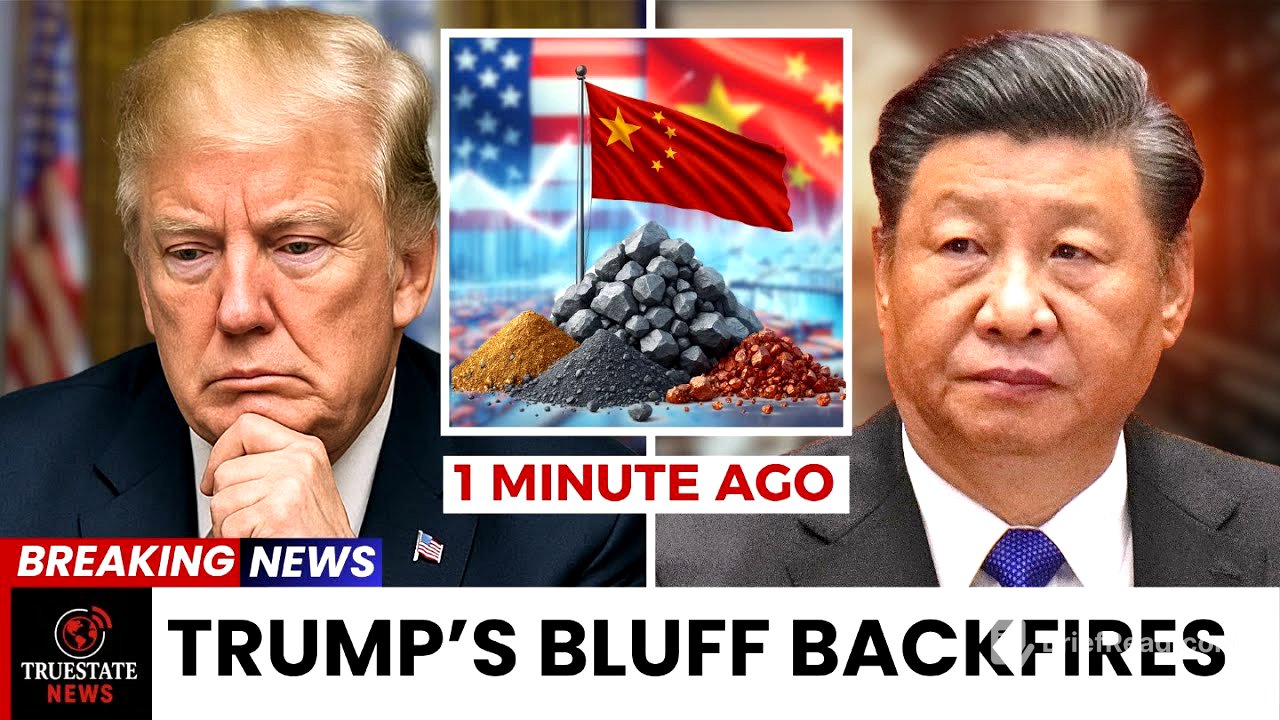TLDR;
This video analyzes the trade "truce" between the US and China, questioning its substance and long-term implications. Despite President Trump's celebratory announcement of a signed trade deal, the agreement lacks concrete details, timelines, and permanence. The deal involves China resuming limited rare earth exports in exchange for the US reducing tariffs and easing visa restrictions, but these measures are temporary. China has expressed opposition to trade agreements that sacrifice its interests, and is already delaying rare earth export approvals and holding back on fentanyl enforcement. The agreement finalizes terms from earlier talks, maintaining existing tariffs while China continues exporting rare earth minerals and the US eases restrictions on ethane exports. While Trump touts the deal as a triumph, economists and business leaders question its impact, as tariffs remain in place and key issues like technology transfers and intellectual property protection are unaddressed.
- The US-China trade deal is more of a truce than a lasting agreement.
- China is acting cautiously, testing Trump's patience and retaining leverage.
- The deal may be more about politics and optics than substantive policy changes.
Initial Announcement and Skepticism [0:00]
The video starts by questioning the details of the trade truce between the US and China, despite confirmations from both countries. President Trump presented the agreement as a win, with markets surging and the S&P 500 hitting a new high. However, the absence of an official document, detailed terms, and enforcement timeline raises concerns about the deal's stability and whether it's just a temporary pause before further trade conflicts.
Terms of the Agreement [1:08]
The deal involves China agreeing to restart limited exports of rare earth elements, which are crucial for various industries, after a significant price spike caused by export restrictions. In return, the US agreed to reduce tariffs on certain Chinese goods and loosen visa restrictions for Chinese students. China also signaled it would take steps to ban key precursor chemicals for fentanyl. However, these measures are not permanent, with rare earth licenses expiring in six months, tariffs only suspended, and promises on fentanyl remaining verbal, making it an unstable truce.
China's Response and Reservations [2:19]
China has expressed opposition to trade agreements that sacrifice its interests in exchange for tariff relief, promising unspecified countermeasures. Despite Washington's praise, Beijing added its own terms and warned against bilateral deals that undercut its position. China is already delaying rare earth export approvals and holding back on fentanyl enforcement, using timing and bureaucracy to test Trump's patience.
Analysis of the Deal's Impact [3:28]
The deal provides the US with access to rare earths, a possible breakthrough on fentanyl, and a chance to avoid economic disruption, but every aspect is temporary and conditional. Voices within the Trump administration are split, with some wanting to keep tariffs in place. The agreement may be more about formalizing talks that already happened in mid-June, with a trade-off involving tariffs and rare earth minerals.
Contrasting Reactions and Underlying Motives [5:07]
The announcement of the framework was met with enthusiasm in Washington but restraint in Beijing, with no ceremony or coordinated messaging from the Chinese side. Trump needed the deal to strengthen his domestic narrative amid pressure to pass his tax cut bill. The agreement finalizes terms from earlier talks, maintaining existing tariffs while China continues exporting rare earth minerals and the US eases restrictions on ethane exports.
Trump's Perspective and Lingering Questions [9:10]
Trump framed the deal as a triumph and a step toward opening up China, seeing it as a personal victory and proof that his tariff strategy worked. However, economists and business leaders question what has actually changed, as tariffs remain in place and key issues like technology transfers and intellectual property protection are unaddressed. The deal may be more about politics than policy, giving Trump something tangible to show before the deadline of his "90 deals in 90 days" campaign.
Details of the Signed Agreement [9:45]
The deal sets out terms from earlier talks but still depends on future action. Commerce Secretary Howard Lutnik confirmed the deal was finalized after negotiations in Geneva and London, locking in the outcomes of those earlier talks. The US maintains its existing 55% tariffs on a wide range of Chinese goods, while China continues applying its 10% retaliatory tariffs on US exports. In exchange, China will continue exporting rare earth minerals to the US, and the US will ease restrictions on ethane exports to China.
Unchanged Realities and Unresolved Issues [12:14]
Despite Trump's celebration, little has changed for US businesses, with the 55% import tariffs remaining and manufacturers still paying more for Chinese components. Chinese e-commerce firms continue to face restrictions, and tech tensions around chips, AI, and critical software were untouched by the deal. The agreement may be more about politics than policy, a signature and a press event to send a message, but the real issues are still waiting for a real solution.









